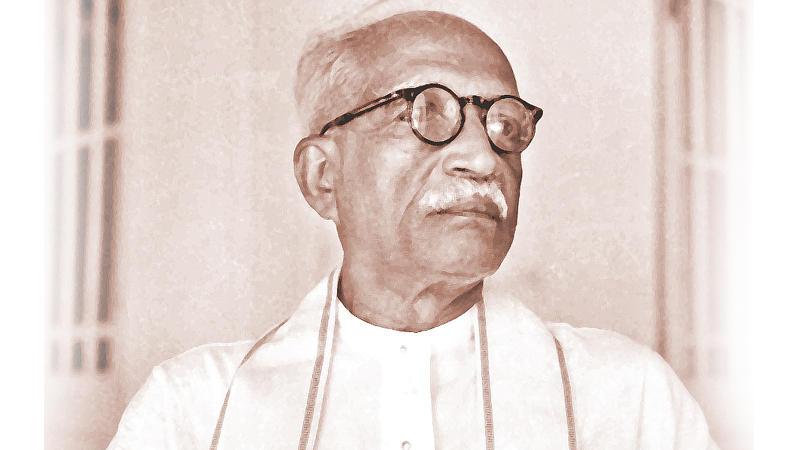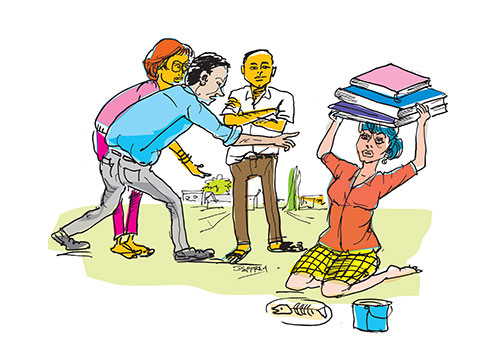Pierre Bourdieu: Charisma can be what social theorist Pierre Bourdieu calls a ‘habitus’ – a set of ingrained behaviours and ways in which one marks one’s presence in the world.
by Harshana Rambukwella
During my introduction and induction to Sri Lankan academia more than a decade ago, I had to undergo teacher training. Such teacher training in higher education was relatively new back then. However, today it is far more mainstreamed and a mandatory requirement in all state (and I assume) private universities. While I believe such teacher training is important – because one is not necessarily ‘born’ a teacher and a PhD or a postgraduate qualification does not prepare one for teaching – such training programs can also bring a homogenizing bureaucratic logic to higher education pedagogy. I believe there is an insidious logic that is reshaping higher education which is connected to the convergence of a number of discourses. One is the belief that higher education teachers need to be ‘professionalized’. I suspect this would have been a very alien concept to someone like the late Prof. Ashley Halpe. I invoke Prof. Halpe’s name not to fold back into some romantic notion of the University of Peradeniya as an exceptional utopian space but in order to be quite consciously and critically nostalgic about a different imagination of the university. The university I knew and I grew up with was a place that still had space for mavericks. It was not a space dominated by a sanitized bureaucratic culture and obsessed with metrics, rankings and efficiency. That maverick quality could come at a cost and as I discuss below could also be elitist and classist. Another discourse that appears to be contributing to this homogenizing logic is the current obsession with quality assurance. Both these discourses have a close affinity to a certain kind of market logic as well and they reinforce each other. In order to be accredited and gain quality assurance professionalization is necessary and along with this professionalization comes a particularly insidious form of disciplining of faculty in higher education – it is a form of discipling that stunts the critical imagination of higher education teachers and replaces it with a banal form of conformism. It is in this context that I want to explore the notion of ‘charisma’ as a behavior or set of behaviours that can potentially resist this homogenizing and bureaucratizing logic.
I have long held a belief that charisma has a place in education and the classroom. “Charisma’ is a slippery term. What is meant by charisma can be gendered, determined by class or even physical appearance. In effect, it can be what social theorist Pierre Bourdieu calls a ‘habitus’ – a set of ingrained behaviors and ways in which one marks one’s presence in the world. Such behaviors, Bourdieu argues, are not accidental – we acquire them through our social background, the kind of education we receive and the kind of culture to which we are exposed. However, most contemporary education theory downplays this charismatic role and instead sees the teacher as a ‘facilitator’. Much of this thinking derives from the shift in education theory to what is called a ‘student-centered’ approach. Given how the generation, dissemination and acquisition of knowledge have undergone significant changes over the last few decades, the changing role of the teacher is understandable. Students can easily access information today and the teacher’s role as a conduit of knowledge has become less and less important. What I hope to do in this article is offer a set of brief reflections on the implications of this shift in pedagogy for higher education and at the same time explore what I would call the ambiguous potential of charisma. I call it ambiguous because Charisma, as I have already pointed out, can carry significant class privilege and therefore create a sense of elitist exceptionalism. However, in my own educational journey from school through university I have benefited from charismatic teachers – they have inspired me, emboldened me and pushed me to think and act in unconventional ways.
The classroom in higher education is increasingly becoming a restrictive space. But the bitter irony is that many of these changes are happening in the name of a host of seemingly emancipatory and ‘disruptive’ discourses. It is now the norm in higher education pedagogical training to ritually invoke ‘student centeredness’, ‘multiple intelligences’ and the use of rubrics to name a few. While all of these pedagogical strategies are important, they are part of a larger discourse where the possibility of the teacher to innovate in the classroom is being subtly restricted as these are elements of a larger change in higher education in Sri Lanka which is shaped by external donor funding – primarily from the World Bank. The process begins with the requirement to map out courses into a rigid matrix where course learning outcomes, program learning outcomes, assessment strategies, learning hours, etc., have to be defined when a program is being developed.
Most of these criteria have to be also expressed in terms of ‘measurable outcomes’. Therefore, ostensibly vague terminology such as ‘promoting critical thinking’ is deemed inadequate. It is expected that there has to be a tangible means of demonstrating how critical thinking has been achieved, which in turn often involves having to define ‘critical thinking’ in reductive terms. This discourse is particularly challenging for the social sciences and humanities which have traditionally not been ‘skills’ oriented but train students to think reflectively and critically about the world around them. This requirement has also been retroactively imposed on existing courses. The logic of this exercise is to ensure that all courses meet basic quality assurance criteria and therefore can be ‘accredited’. Such accreditation is becoming an increasing existential necessity for programs and courses and eventually for universities as institutions because funding and resource allocation are being tied to institutions being able to meet such accreditation criteria. There is also a market-logic underlying these changes because in essence by creating such uniform and ‘measurable’ indices, higher education is being converted to a ‘tradeable’ commodity – where qualifications, coursework and grades can be transferred from one system to another.
However, what is bitterly ironic in this process is that if a classroom is to be truly ‘student centered’ or if a teacher is to truly encourage ‘multiple intelligences’ the logic of homogenization that underlies the process described above makes little sense. What ‘student centeredness’ means or how one creates space for ‘multiple intelligences’ in a particular classroom is highly contingent on the specific context. Similarly, the very content of what one teaches needs to be negotiated carefully in relation to a specific context. For instance, a course on language ideology might have a very different theoretical orientation and content if it’s taught in a Sinhala or Tamil department as opposed to an English department. Attempting to normalize such diversity will make little sense and will also be damaging to the pedagogical outcomes of the course.
It is in this context that I believe ‘charisma’ has a role in the classroom. Teachers, particularly in higher education (though I would like to envision a world where this would apply to education at all levels), where traditionally there has been no uniform structure in terms of syllabus or teaching approach in contrast to primary or secondary education, need to have the freedom to innovate. There needs to be a space where both the teaching style and content can be non-conformist. A maverick teacher in higher education is an asset and one that needs to be nurtured and provided space but unfortunately institutions and politics are increasingly foreclosing this possibility. Charisma in this sense for me is an act of defiance – an act of defiance by which through the way you dress, walk, talk, the material you chose to teach, how you teach this material, etc., you bring a sense of edginess to the classroom. In effect, you inhabit the class in a disruptive fashion, that cuts against the dull conformity that the homogenizing culture I describe above attempts to instill.
However, as I discussed earlier, charisma is also ambiguous. One can be ‘charismatic’ in ways that reproduce various forms of cultural and social elitism. This might be, for instance, the way in which you speak English or how you appeal to various elite values. Charisma can also bring a kind of arrogance. Charismatic teachers can be less tolerant of difference, authoritarian and unwilling to play by team rules. The charisma I am interested in is not this kind of exceptionalism but a kind of aura a teacher can bring into a class that has the potential to disrupt convention and act as a bulwark against the mind-numbing bureaucratic logic that is increasingly dominating the higher education landscape. If teacher training is to be truly empowering, we need to find a space where these kinds of disruptive logic can be integrated as a corrective to the conformism and homogenization that is steadily engulfing the higher education landscape.



